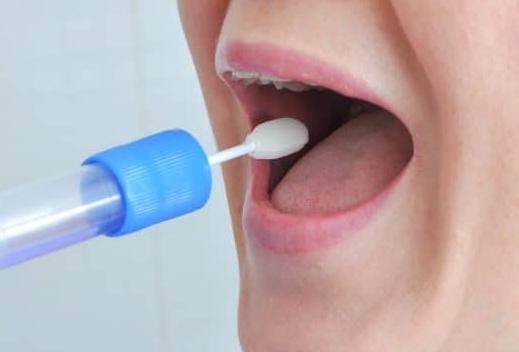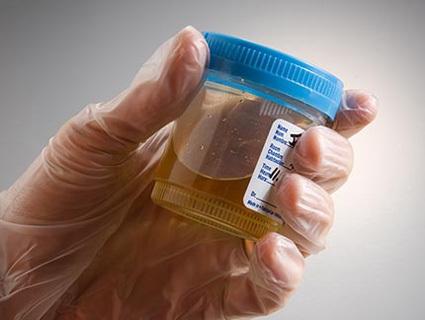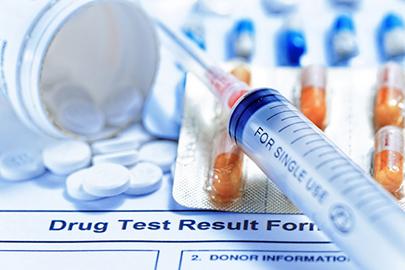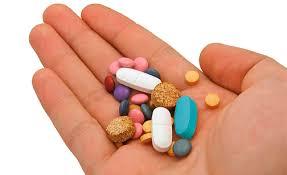|
Saliva Test Sensitivites |
|
|
Drug Class |
Sensitivity |
|
Amphetamines |
50 ng/mL |
|
Benzodiazepines |
20 ng/mL |
|
Cocaine |
20 ng/mL |
|
Opiates |
40 ng/mL |
|
Marijuana |
12 ng/mL |
The Accu-Metrics saliva drug test is a qualitative and anonymous analysis for the presence of illicit drug metabolites in saliva. Analysis results will indicate a negative or positive for each drug tested. The test is performed at home, and takes about 5-10 minutes.
Principles of Saliva Drug Testing
Immunologic analysis of drugs and saliva are performed by fluorescence polarization immuno-assay (FPIA) for codeine like compounds, cocaine, marijuana, and amphetamines. Benzodiazepine is done by radioimmuno assay.
Extensive research has established a clear relationship between drug levels in saliva and those in non-protein linked serum concentrations. Saliva is an efficient method of detection with the advantages of being rapid and more convenient than urine or blood analysis.
While it is not possible to precisely calculate drug concentrations directly from saliva, the test is nevertheless extremely important in detecting drug levels over certain limits.
While many drugs and their metabolites can be quantitatively tested for a 90 day historical usage level utilizing hair, as employed in the Viaguard Multi-Drug Test Kit, testing saliva yields immediate results of ingested drugs in the previous 1-72 hours.
Saliva testing in monitored circumstances should be done on a cycle of once every 4-6 weeks where substance abuse is a concern. Saliva testing is an invaluable tool in screening persons engaged in occupations where substance abuse presents a health or safety hazard.
Saliva drug tests are sold in units of 6 tests for $99.00 including taxes and delivery in North America. Single tests cost $25.00 also including taxes and delivery. To order, call us at 416-691-4167 or toll free at 1-877-842-4827.
How to Use the Saliva Sample Drug Test

1. Remove test device from pouch. Write ID on back of device, if desired. Uncap the device to expose the collection pad.
2. Insert collection pad into mouth with test device slanted downwards. Hold edge of plastic firmly between the lips with ample distance from result window. Do not bite, chew or pull on collection pad.
3. Leave in mouth for 1-3 minutes or until pink colour begins to appear in result window. Remove device from mouth immediately.
4. Replace cap. Place device on flat surface. Start timing when C (control) line appears.
5. Read results at 5-7 minutes after C line first appears. DO NOT read after 7 minutes.
Benefits of Saliva Testing Over Urine/Blood Testing
- No bathroom facilities required
- Solves 'shy bladder' issue
- Solves gender specific supervision issue
- Non-invasive
- Difficult to tamper with or adulterate
- Simple one-step process with immediate results
- Ability to supervise multiple test subjects at once
- Identifies relevant parent drug and metabolites
- Screens for recent drug use
Summary of Drugs Tested
Amphetamine (AMP)
Amphetamines are central nervous system stimulating drugs. They may induce alertness, wakefulness, increased energy, reduced hunger and overall feeling of well being. Overdose and extended usage of amphetamines may lead to substance abuse, which may cause severe and/or permanent damage to the human nervous system.
Benzodiazepines (BZD)
Benzodiazepines, including alprazolam, diazepam, lorazepam, triazolam, chlordiazepoxide, flurazepam and temazepam are sedative, hypnotic and anti-anxiety drugs commonly used as oral tranquilizers. Benzodiazepines have a low potential for physical or psychological dependence. However, the same as other central nervous system stimulating drugs, they may induce drowsiness and muscle relaxation. Chronic abuse of benzodiazepine may result in intoxication, similar to drunken behaviour. Overdose and extended usage of benzodiazepines may lead to coma and possibly death. Benzodiazepines are absorbed at different rates and their effects may vary with the absorption rate.
Cocaine (COC)
Cocaine is a nervous system stimulant that can be addictive. Physical effects of cocaine use include constricted peripheral blood vessels, dilated pupils, and increased body temperature, heart rate and blood pressure. Some cocaine users report feelings of restlessness, irritability and anxiety, both while using and between periods of use. High doses of cocaine and/or prolonged use can trigger paranoia. Smoking crack cocaine can produce particularly aggressive paranoid behaviour in users. Long-term effects: Prolonged cocaine use can result in ulceration of the mucous membrane of the nose and can damage the nasal septum enough to cause it to collapse. Cocaine-related deaths are often a result of cardiac arrest or seizures followed by respiratory arrest.
Morphine (OPI)
Morphine is a frequently prescribed drug (under the trade name Serax) for treatment of moderate to severe pain. It is also a common metabolite of opiates [morphine, codeine (methyl-morphine), and heroin (semi-synthetic derivatives of morphine)]. Opiates are administered either by smoking, intravenous injection, intramuscular injection or oral ingestion. Adverse or toxic effects of opiates usage include pupilary constriction, constipation, urinary retention, nausea, vomiting, hypothermia, drowsiness, dizziness, apathy, confusion, respiratory depression, hypotension, cold and clammy skin, coma and pulmonary edema. Death may occur following over-dosage.
Marihuana (THC)
Tetrahydrocannabinols (THC, Δ9-THC) are the most active of the principal constituents of cannabinoids such as marijuana and hashish, as well as the major metabolites. Cannabinoids have been used as central nervous system depressants. Overdose and extended usage of cannabinoids may lead to substance abuse, which may cause severe and /or permanent damage to the human nervous system.
































